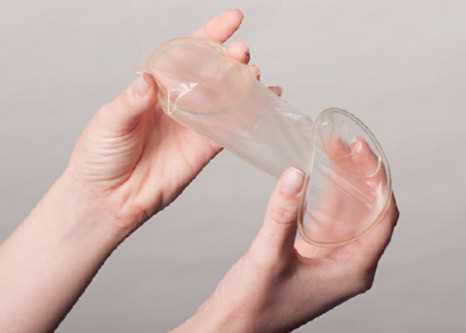
Female condoms have been available for over 30 years, yet they remain largely unpopular and underutilized. This is in stark contrast to their male counterparts, which are widely recognized and easily accessible. So, what are the reasons behind this lack of popularity?
Firstly, a lack of awareness and education about female condoms plays a significant role. Many people are simply unaware that female condoms exist or do not fully understand how to use them. This lack of knowledge contributes to a lack of demand and subsequently low uptake.
Additionally, the cultural stigma surrounding female sexuality and sexual health can also be attributed to the unpopularity of female condoms. Society tends to place the burden of contraception on women, and female condoms challenge this norm by giving women more control over their own protection. Unfortunately, the idea of women taking ownership of their sexual health is often met with resistance and discouragement.
Furthermore, the cost and accessibility of female condoms may also be factors. Compared to male condoms, female condoms can be more expensive, making them less accessible to those with limited financial resources. Additionally, female condoms may not be as readily available in stores or clinics, making it difficult for individuals to access them when needed.
In conclusion, the lack of popularity of female condoms can be attributed to a combination of factors, including a lack of awareness and education, cultural stigma, and cost/accessibility issues. Addressing these barriers is crucial in order to promote the use of female condoms and empower individuals to take control of their sexual health.
- Reasons Behind the Unpopularity of Female Condoms
- 1. Lack of Awareness and Education
- 2. Cost
- 3. Social and Cultural Stigma
- 4. Comfort and Fit
- 5. Availability and Accessibility
- Limited Awareness and Education
- Inadequate Promotion
- Stigma and Misconceptions
- Lack of Accessibility and Affordability
- Ineffective Marketing Strategies
- Misconceptions and Stigma
- Preference for Male-Controlled Methods
- Cultural and Societal Factors
- 1. Lack of Awareness and Education
- 2. Taboos and Stigma
- 3. Gender Dynamics and Power Imbalances
- 4. Availability and Accessibility
- Q&A:
- Why are female condoms not as popular as male condoms?
- What are the advantages of using female condoms over male condoms?
- Do female condoms provide the same level of protection as male condoms?
- Are female condoms reusable?
- Are there any downsides to using female condoms?
- Why aren’t female condoms popular?
Reasons Behind the Unpopularity of Female Condoms
Female condoms, despite being an effective form of contraception and protection against sexually transmitted infections, remain largely unpopular. There are several reasons that contribute to this lack of popularity, including:
1. Lack of Awareness and Education
One of the primary reasons for the unpopularity of female condoms is a lack of awareness and education. Many individuals are simply unaware of the existence of female condoms or do not fully understand how they work. The lack of comprehensive sex education programs and limited public health campaigns contribute to this lack of knowledge.
2. Cost
Female condoms are generally more expensive than male condoms. This higher cost can be a deterrent, particularly in low-income communities where affordability is a significant consideration. The cost barrier prevents many individuals from accessing and using female condoms as a viable contraceptive option.
3. Social and Cultural Stigma
Female condoms may face social and cultural stigma, which can discourage individuals from using them. In some societies, female sexuality is still heavily stigmatized, and the use of female condoms may be seen as a sign of promiscuity or a challenge to traditional gender roles. This stigma can create barriers to the widespread acceptance and use of female condoms.
4. Comfort and Fit
Female condoms are often perceived as less comfortable and less easy to use compared to male condoms. Some individuals may find them difficult to insert or remove, leading to a negative experience. The lack of variety in terms of sizes and designs may also contribute to discomfort and hinder their popularity.
5. Availability and Accessibility
Compared to male condoms, female condoms are generally less available and accessible. They may not be as widely stocked in pharmacies, clinics, or public health centers, limiting individuals’ access to this contraceptive method. The lack of availability contributes to the overall unpopularity of female condoms.
| Reason | Description |
|---|---|
| Lack of Awareness and Education | Many individuals are unaware of female condoms and how they work due to limited sex education programs and public health campaigns. |
| Cost | The higher cost of female condoms compared to male condoms can be a deterrent, particularly in low-income communities. |
| Social and Cultural Stigma | Female condoms may face stigma and be seen as a challenge to traditional gender roles or a sign of promiscuity. |
| Comfort and Fit | Female condoms may be perceived as less comfortable and easy to use, leading to a negative experience. |
| Availability and Accessibility | Female condoms are generally less available and accessible compared to male condoms, limiting their use. |
Limited Awareness and Education
One of the primary reasons why female condoms are not popular is due to limited awareness and education about their existence and benefits. The lack of comprehensive sexual education and limited promotion by healthcare providers contribute to the limited knowledge about female condoms among individuals.
Oftentimes, the focus of sexual education is primarily on male condoms, with little or no information provided about female condoms. This limited education leaves many people unaware that female condoms even exist as an alternative form of contraception and protection against sexually transmitted infections.
Inadequate Promotion
The promotion of female condoms by healthcare providers and organizations is not as extensive as that of male condoms. Female condoms are often overshadowed by male condoms in terms of promotion and availability.
Due to these factors, female condoms are not as easily accessible or visible in stores and pharmacies, making it even more difficult for people to become aware of their existence.
Stigma and Misconceptions
Another aspect that contributes to the limited awareness of female condoms is the stigma and misconceptions surrounding them. Some people may perceive female condoms as complicated to use or uncomfortable, leading to a negative perception of this contraceptive method.
This stigma and lack of accurate information perpetuate the misunderstanding and hesitancy towards using female condoms, further hindering their popularity.
- Many people may also hold misconceptions about the effectiveness and safety of female condoms compared to male condoms.
- These misconceptions may stem from the lack of education or incorrect information about female condoms.
- Clear and accurate information regarding the benefits, correct usage, and effectiveness of female condoms should be provided to address these misconceptions.
Overall, limited awareness and education regarding female condoms play a significant role in their lack of popularity. Increased efforts should be made to educate individuals about female condoms, their benefits, and how to use them correctly in order to promote their wider usage and acceptance.
Lack of Accessibility and Affordability
The lack of accessibility and affordability of female condoms is one of the reasons why they are not popular. In many countries, female condoms are not readily available or easily accessible, especially in rural areas. This lack of accessibility means that they are not widely used or known about, contributing to their lack of popularity.
Furthermore, the cost of female condoms can be a deterrent for many individuals. Compared to male condoms, female condoms tend to be more expensive, making them less affordable for those with limited financial resources. The high cost of female condoms may discourage people from purchasing them or trying them out, further contributing to their lack of popularity.
Additionally, the lack of awareness and education about female condoms can also play a role in their lack of popularity. Many individuals may not be familiar with female condoms and how to use them correctly. This lack of knowledge can make people hesitant to try female condoms or even consider them as a viable option for contraception or protection against sexually transmitted infections.
| Barrier | Impact |
|---|---|
| Lack of accessibility | Prevents widespread use |
| High cost | Makes them less affordable |
| Lack of awareness | Leads to hesitation and reluctance |
To increase the popularity and usage of female condoms, it is essential to address these barriers. Efforts should be made to improve accessibility by ensuring that female condoms are readily available in various locations, including rural areas. Additionally, initiatives can be taken to reduce the cost of female condoms, making them more affordable for individuals of all economic backgrounds.
Increase awareness and education about female condoms is also crucial. Educating individuals about the benefits and correct usage of female condoms can help dispel misconceptions and increase acceptance. This can be done through comprehensive sexual education programs, informational campaigns, and outreach efforts targeted at different communities and age groups.
By addressing the lack of accessibility and affordability, as well as increasing awareness and education about female condoms, their popularity and usage can be significantly improved, leading to better sexual health outcomes for individuals worldwide.
Ineffective Marketing Strategies
One reason why female condoms are not popular is due to ineffective marketing strategies. Companies and organizations have often failed to effectively promote and raise awareness about female condoms, leading to a lack of knowledge and understanding among potential users.
One common issue is the lack of targeted marketing campaigns. Many marketing efforts for female condoms have been generic and broad, failing to reach specific demographics or communities that could benefit from using them. By not tailoring marketing campaigns to specific groups, such as young women or LGBTQ+ individuals, potential users may not be aware that female condoms are an option for them.
In addition, there has been a lack of visibility for female condoms in mainstream media. Unlike male condoms, which are often featured in advertisements and widely discussed, female condoms have not received the same level of attention. This can contribute to a perception that female condoms are not widely used or accepted, further discouraging individuals from considering them as a contraceptive option.
Another ineffective marketing strategy has been the failure to address misconceptions and stereotypes surrounding female condoms. Many people still have outdated views about female condoms, such as concerns about comfort or effectiveness. By not actively addressing these misconceptions through targeted messaging and education, potential users may be deterred from trying female condoms.
Furthermore, the high cost of female condoms has been a barrier for many individuals. Marketing efforts have often not adequately addressed the cost issue or provided information about affordable options, leading to a perception that female condoms are too expensive. This can discourage individuals from considering female condoms as a viable contraceptive option, further contributing to their lack of popularity.
In order to increase the popularity of female condoms, it is crucial for companies and organizations to develop effective marketing strategies. This includes targeted campaigns that reach specific demographics, increased visibility in mainstream media, addressing misconceptions, and providing affordable options. Only through effective marketing efforts can female condoms become a popular and widely used contraceptive choice.
Misconceptions and Stigma
One of the reasons why female condoms are not popular is due to misconceptions and stigma surrounding them. Many people have misconceptions about how female condoms work and believe they are less effective than male condoms. However, this is not true. Female condoms are just as effective in preventing pregnancy and sexually transmitted infections (STIs) as male condoms when used correctly.
Another misconception is that female condoms are uncomfortable or difficult to use. Some people may feel reluctant to try female condoms because they are unfamiliar with them or have heard negative experiences from others. However, with practice and proper education, female condoms can be just as easy and comfortable to use as male condoms.
There is also a stigma attached to female condoms that they are only used by promiscuous or high-risk individuals. This stigma can discourage some people from trying female condoms or talking openly about them. In reality, anyone who wants to take control of their sexual health and protect themselves and their partners can use female condoms.
Breaking down these misconceptions and reducing the stigma surrounding female condoms is essential in increasing their popularity. Education and awareness campaigns can help to debunk myths and provide accurate information about female condoms. Creating a positive and open dialogue about female condoms can also help to normalize their use and make them accessible to a wider range of people.
Preference for Male-Controlled Methods

One of the main reasons why female condoms are not popular is the preference for male-controlled methods of contraception. Throughout history, the responsibility for contraception has largely fallen on women. From oral contraceptives to intrauterine devices, women have had to take the lead in preventing unintended pregnancies. As a result, many people are conditioned to view contraception as primarily a woman’s responsibility.
Male-controlled methods, such as condoms, have become the norm because they are seen as easier to use and less invasive. Condoms are readily available, affordable, and provide dual protection against unintended pregnancies and sexually transmitted infections. Additionally, some men may prefer the sensation of sex without a condom, leading them to resist or avoid using female condoms.
Traditional gender roles also play a role in the preference for male-controlled methods. In many societies, men are traditionally seen as the ones responsible for contraception and family planning. This societal expectation can influence both men and women to prioritize male-controlled methods and overlook the potential benefits of female condoms.
Moreover, the lack of awareness and education about female condoms contributes to their unpopularity. Many people may not be familiar with how female condoms work or may have misconceptions about their effectiveness and comfort. This lack of knowledge can make people hesitant to try or use female condoms, further perpetuating the preference for male-controlled methods.
| Factors Contributing to the Preference for Male-Controlled Methods: |
|---|
| Lack of awareness and education about female condoms |
| Preconceived notions about contraception as primarily a woman’s responsibility |
| Traditional gender roles and societal expectations |
| Perceived ease of use and invasiveness of male-controlled methods |
Cultural and Societal Factors

There are several cultural and societal factors that contribute to female condoms not being popular. These factors vary across different regions and cultures, but some common reasons include:
1. Lack of Awareness and Education
One major factor is the lack of awareness and education about female condoms. In many societies, there is limited knowledge about these contraceptives, their availability, and their proper usage. This lack of information prevents many women and men from considering female condoms as a viable option for protection against unwanted pregnancies and sexually transmitted infections.
2. Taboos and Stigma
In some cultures, there may be taboos and stigmas associated with female condoms. These taboos might include misconceptions about female condoms being uncomfortable or unnatural, or assumptions that their usage implies promiscuity or infidelity. These deeply ingrained beliefs can discourage individuals from considering or discussing female condom usage openly.
3. Gender Dynamics and Power Imbalances
Gender dynamics and power imbalances can also influence the popularity of female condoms. In societies where women have limited decision-making power regarding their sexual health and reproductive choices, the use of female condoms may be challenging. Women may face resistance from their partners or cultural norms that prioritize male-controlled methods of contraception.
4. Availability and Accessibility

The availability and accessibility of female condoms can also play a role in their low popularity. In some regions, female condoms may not be widely available in stores or healthcare settings. Limited access can hinder individuals from obtaining female condoms when needed, leading them to rely on more easily accessible methods or not use any contraception at all.
Overall, these cultural and societal factors contribute to the underutilization of female condoms. Addressing these barriers requires comprehensive sex education, destigmatization efforts, and improved availability and accessibility of female condoms in communities.
Q&A:
Why are female condoms not as popular as male condoms?
Female condoms are not as popular as male condoms for several reasons. One reason is the lack of awareness and knowledge about female condoms among both men and women. Another reason is the social stigma attached to female condoms, as they are often seen as less “traditional” or “masculine” than male condoms. Additionally, female condoms are more expensive and less accessible compared to male condoms, which further limits their popularity.
What are the advantages of using female condoms over male condoms?
There are several advantages of using female condoms over male condoms. Firstly, female condoms allow women to take control of their own sexual health and protection. They provide a barrier that covers the external genitalia, reducing the risk of sexually transmitted infections (STIs) and unplanned pregnancies. Female condoms can also be inserted hours before sexual intercourse, providing convenience and spontaneity. Furthermore, female condoms are not tight-fitting like male condoms, which can provide a more comfortable and pleasurable experience for both partners.
Do female condoms provide the same level of protection as male condoms?
Yes, female condoms provide the same level of protection as male condoms when used correctly. They are made of polyurethane or nitrile, which are effective barriers against sexually transmitted infections (STIs) and unwanted pregnancies. It is important to follow the instructions for inserting and removing the female condom to ensure proper protection. Using a female condom in combination with a male condom can also provide extra protection against STIs.
Are female condoms reusable?
Female condoms are not intended to be reused. They are designed for single-use and should be discarded after each sexual encounter. Reusing a female condom can increase the risk of breakage, as well as the risk of sexually transmitted infections (STIs) and unplanned pregnancies. It is important to use a new, unopened female condom for each sexual act to ensure maximum effectiveness and protection.
Are there any downsides to using female condoms?
While female condoms have many advantages, there are also some downsides to using them. One disadvantage is the higher cost compared to male condoms. Female condoms are generally more expensive, which can make them less accessible to some individuals. Another downside is the unfamiliarity and lack of education about female condoms among both men and women. This can lead to difficulties with insertion and removal, as well as a reluctance to try them. Finally, some people may find the sensation of female condoms less pleasurable compared to male condoms due to the differences in design and material.
Why aren’t female condoms popular?
There are several reasons why female condoms are not popular. Firstly, lack of awareness and education plays a significant role. Many people are simply not aware that female condoms exist or how to use them properly. Secondly, the cost of female condoms can be a barrier for many individuals, as they are often more expensive than male condoms. Additionally, some people may find female condoms less comfortable or less pleasurable to use compared to other contraceptive methods. Socio-cultural factors and stigma surrounding female sexuality and reproductive health can also contribute to the lack of popularity of female condoms.